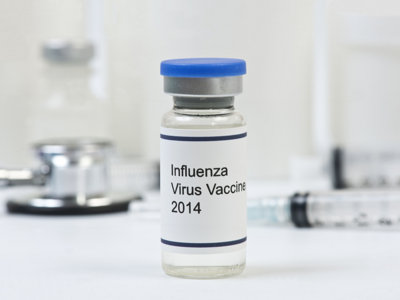Stay away from Facebook, it’s covered in germs. If it wasn’t alarming enough that every third social media post appears to be about a feverish and/or vomiting child, the news at some local schools has been pretty crazy, too.
Last week, one of my children came home to report that there were only five kids – out of about 12 – in her MPS classroom in the afternoon. Then came the morning a couple days later when another one of mine awoke with a fever pushing 103. This despite getting a flu shot in October. It lasted about four days.
Talking to parents, mine had what everyone else seems to be suffering – fever, some dizziness and a pick-your-poison blend of gastrointestinal and/or respiratory woes, perhaps with or without a sore throat.
Some folks told me nearly everyone in their household was hit.
Yesterday, another friend kept her first grader home from his Catholic school and called in to notify the teacher only to learn that 13 others in first grade at the school either called in or went home sick this morning.
I contacted Paul Biedrzycki, director of disease control and environmental health at the City of Milwaukee Health Department, and he confirmed that the city is in full-on ill-health.
“The influenza season is well underway in Wisconsin including the City of Milwaukee, as evidenced by the number of flu related hospitalizations being reported to the City of Milwaukee Health Department (49),” he said in an email.
“Also circulating in the community is pertussis (whooping cough), which is a bacterial infection that is easily spread person to person through airborne route, as well. Pertussis can be especially serious for young toddlers and infants who can be hospitalized as a result with pneumonia and other complications.”
The flu, says Biedrzycki, is that respiratory stuff, not the gastrointestinal funk.
“Flu is characterized by fever, sore throat and cough, as well as general muscle aches and malaise,” he said. “It is easily and readily spread person to person from an infected individual coughing or sneezing but can also be spread on through contact with commonly touched and contaminated surfaces such as doorknobs, handrails, etc.”
Biedrzycki added that the flu shares a flare-up season with other respiratory woes, like rhino-entero viruses – aka the common cold – and this year there has been what he calls a marked increase in EV-D68 across the country.
“The latter is characterized by symptoms of cough, shortness of breath and wheezing especially in younger children and has resulted in increased hospital room visits in many cities nationwide since being recognized in late summer,” Biedrzycki said.
As for schools, MPS media manager Tony Tagliavia says that the district has not seen anything unusual lately in terms of attendance or illnesses.
“We looked at district-wide attendance data and did not see a dip in attendance last week,” he says. “Our nursing supervisor says the illness reports she is hearing about are typical for this time of year.”
That’s likely no surprise as flu strikes around this time every year, but last night I saw another post in a school’s parent group on Facebook noting that one teacher emerged from school at dismissal yesterday accompanied by only three students. A comment on the post by another parent suggested a dozen kids in that teacher’s classroom were out sick.
This morning, one MPS principal told me his school’s attendance, which is typically at 96 or 97 percent, is hovering down at about 92, a significant drop. And anecdotally, teachers say kids are out, and often most notably, some kids who are never absent have missed up to a week of classes in the past couple weeks.
Based on the data from the district, these outbreaks appear to be localized at specific schools, a fact supported by what the Health Department has observed.
“The convergence of many types of respiratory viruses and bacterial illnesses now prevalent in the community has resulted in lots of adults and children becoming ill as the holiday season approaches,” said Biedrzycki. “Currently, the MHD has received reports of small clusters of pertussis in day cares and schools and well as flu in nursing home facility settings.
“The convergence of many types of respiratory viruses and bacterial illnesses now prevalent in the community has resulted in lots of adults and children becoming ill as the holiday season approaches. This potentially – and unfortunately – can further amplify transmission of disease in the community due to holiday parties, family get-togethers and similar festivity gatherings.”
Be aware, too, that with so many illnesses going around, pharmacies may experience shortages of medicines to treat them. A parent of that first grader mentioned above said her family has had trouble locating Tamiflu.
“Last night,” she reported, “my husband went to pick up (our son’s) prescription only to find that five of the surrounding pharmacies are completely out of the liquid children’s version of Tamiflu.”
What can you do? Use common sense, for a start and wash your hands, cover your mouth when you cough or sneeze, and stay home from work or school if you’re sick. You’re not doing anyone any favors by showing up when you’re contagious.
“Equally important is to get vaccinated against influenza and pertussis both of which are preventable through immunization,” added Biedrzycki. “Avoid sharing eating utensils and touching one’s nose, eyes or mouth with unwashed hands is also recommended.
“Finally, seeking care from your health care providers should symptoms worsen or not resolve in a few days especially is warranted. Antiviral medications like Tamiflu are especially important in reducing the severity and duration of flu for the most vulnerable in our community – young children, the elderly, pregnant women and anyone with underlying chronic health conditions.”


 i evaluate to yes even if there's no image
i evaluate to yes even if there's no image  i evaluate to yes even if there's no image
i evaluate to yes even if there's no image  i evaluate to yes even if there's no image
i evaluate to yes even if there's no image  i evaluate to yes even if there's no image
i evaluate to yes even if there's no image  i evaluate to yes even if there's no image
i evaluate to yes even if there's no image  i evaluate to yes even if there's no image
i evaluate to yes even if there's no image 